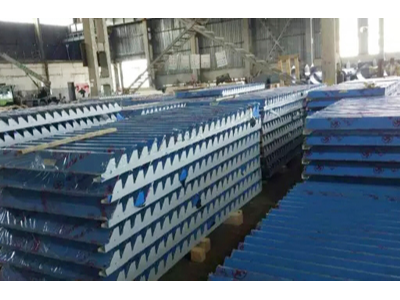彩涂板基板涂层前为什么要进行表面处理
彩涂板生产线的最终产品无论是哪一种类型:
彩涂板、压花板或层压(贴膜)板在机组工艺段预处理阶段,都要经过表面净化处理,即脱脂处理、化学转化膜处理等两个重要阶段。其中净化处理的作用有以下几点。

(1)提高涂层与钢基板的配套性和相容性。表面处理除了脱脂、摩擦等清洁工序外还可包括表面的化学转化处理即涂化学液。经过化学转化后的表面能够形成有一定粗糙度的层膜,扩大涂层与彩涂板基板接触的表面积,对涂层附着十分有利。
(2)使彩涂板基板表面活化。去除基板生产过程中为防锈而涂上的防锈油、污垢和锈渍,污垢可分无机和有机物两类,有机物污物主要是动物性油脂、植物性油脂及矿物性油脂,无机物污物是金属氧化物、盐类、尘埃及砂土。另外还有有机物和无机物污物之和,如研磨屑、研磨材料等。动物性及植物性油脂可被碱剂皂去除。矿物性油污无法被碱剂皂去除,需用三氯乙烯、汽油、石油溶剂乳化剂等去除。无机物污物可被酸或碱溶解,利用酸、碱浸渍、化学或电解方法去除及机械研磨方法去除。无机、有机混合污物,去除较困难,除了利用化学方法,亦须用电解、机械研磨等方法联合应用去除,它们的存在不仅影响涂膜的外观,严重的会影响涂层与基板之间的附着力,使涂膜成片脱落。因此,涂前通常经过摩擦方式进行表面处理,以提高基板表面的清洁度和活化性。
(3)增强涂层对物体表面的附着力。在除去基板表面附着的防锈油、锈斑、灰尘等后,能在清洁的彩涂板基板表面进行化学涂敷处理,形成以Cr和C为基本骨架的网状化学转化膜,以此增加基板与涂层之间的附着性,提高基板的防腐性和涂层的耐久性。以保证在化学转化处理时,能在基板表面形成结构均匀、附着力强的化学转化膜,避免涂料涂层因油污、空气、水分等引起气泡现象。
(4)保证和提高涂层的防护性能。在正常使用环境中,侵蚀性离子如氧化皮和锈蚀物有可能滲人有机涂层,到达钢基表面,由于其电极电位比钢铁约高0.15-0.26V,所以成为阴极,而钢铁本身成为阳极而引发膜下腐蚀,随着腐蚀的不断发展,最终有机涂层将出现鼓泡直至破坏、剥落。为了提高有机涂层钢板的耐蚀性能,在钢板涂敷之前完成表面处理工序,使有机涂层钢板耐蚀性大大提高,延长涂层的使用寿命。
The final products of color coating production line, no matter what type: coating board, embossing board or laminating (film-pasting) board, must undergo surface purification treatment in the pretreatment stage of unit process section, namely degreasing
treatment, chemical conversion film treatment and other two important stages. Among them, the effect of purification treatment has the following points.
(1) Improve the compatibility and compatibility between the coating and the steel substrate. In addition to degreasing, friction and other cleaning processes, surface treatment can also include chemical conversion treatment of the surface, i.e. coating
chemical solution. After chemical conversion, a certain roughness layer can be formed on the surface, which enlarges the surface area of the contact between the coating and the substrate, and is very beneficial to the adhesion of the coating.
(2) Activate the surface of the substrate. Remove the rust-proof oil, dirt and rust stain coated in the production process of the substrate. The dirt can be divided into two categories: inorganic and organic. The organic dirt is mainly animal oil, vegetable
oil and mineral oil. The inorganic dirt is metal oxide, salt, dust and Egyptian sand. In addition, there are organic and inorganic pollutants, such as abrasive debris, abrasive materials and so on. Animal and vegetable oils can be removed by alkali
soap. Mineral oil pollution can not be removed by alkali soap. It needs to be removed by trichloroethylene, gasoline, petroleum solvent emulsifier, etc. Inorganic contaminants can be dissolved by acid or alkali, and removed by acid, alkali impregnation,
chemical or electrolytic methods and mechanical grinding methods. The removal of inorganic and organic mixed wastes is difficult. In addition to chemical methods, electrolysis and mechanical abrasion should be combined to remove them. Their existence
not only affects the appearance of the coating, but also seriously affects the adhesion between the coating and the substrate, which makes the film peel off. Therefore, surface treatment is usually carried out by friction before coating to improve
the cleanliness and activation of the substrate surface.
(3) Enhance the adhesion of the coating to the surface of the object. After removing the rust-proof oil, rust spots and dust attached to the substrate surface, chemical coating can be carried out on the clean substrate surface to form a network chemical
conversion film with CrC as the basic framework, so as to increase the adhesion between the substrate and the coating, improve the corrosion resistance of the substrate and the durability of the coating. In order to ensure that the chemical conversion
coating with uniform structure and strong adhesion can be formed on the surface of the substrate during the chemical conversion treatment, so as to avoid the bubble phenomenon caused by oil pollution, air, moisture and so on.
(4) Ensure and improve the protective performance of the coating. In normal service environment, corrosive ions such as oxide scale and rust may penetrate into organic coatings and reach the surface of steel base. Because the electrode potential is about
0.15-0.26V higher than that of iron and steel, it becomes cathode, and steel itself becomes anode, which causes corrosion under film. With the continuous development of corrosion, the organic coatings will eventually appear drum. Bubble until destroyed
and peeled. In order to improve the corrosion resistance of the organic coated steel plate, the surface treatment process was completed before the steel plate was coated, which greatly improved the corrosion resistance of the organic coated steel
plate and prolonged the service life of the coating.
